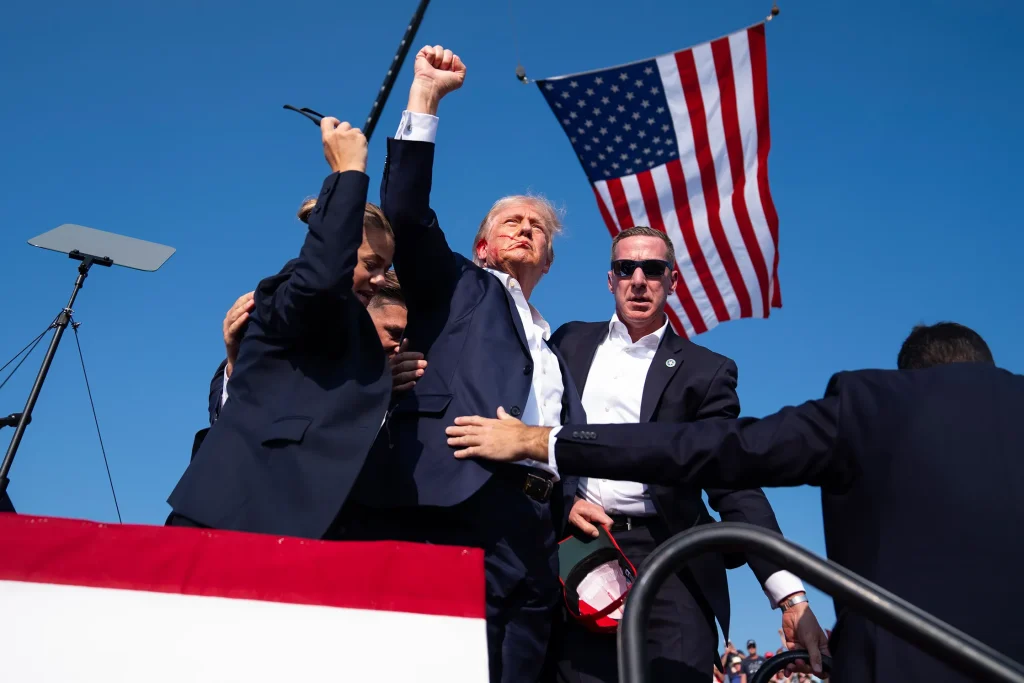The process of choosing the president of the United States of America for the ensuing four years is known as the U.S. presidential election. Millions of voters cast ballots, An indirect system in addition to the more straightforward popular vote determines the future president. Every four years, the nation’s leader is chosen by a special system called the Electoral College. The 2016 election saw Donald Trump (46.1%) win the presidency despite receiving over 2.9 million fewer votes overall than his rival, Hilary Clinton (48.2%), thanks in large part to this intricate structure.
In this article, we will discuss the structure, history, and controversies around the Electoral College and how this system has reversed the outcomes of some of the most closely contested elections in the history of the United States including that of the 2016 Election.
Origins of the Electoral College
The Electoral College was established by the framers of the U.S. Constitution in 1787 as a compromise arrangement between a pure popular vote and an election by Congress. At the time of the drafting of the Constitution, the founders were concerned about how to balance the state and the federal powers while also avoiding the drawbacks of direct democracy. They feared that direct democracy could lead to “tyranny of the majority”. They also wanted to ensure that the smaller states had a voice in the selection of the president, balancing with the larger and more populous states from dominating elections.
To balance all these, the Electoral College was created, where each state has allocated electors proportional to its total number of representatives in Congress (the sum of its senators and house representatives). This granted smaller states a balanced influence than they would have if it was a strictly popular vote system. The compromise was intended to protect the interests of less-populated states while still allowing the people of America to participate in the presidential election.
How the Electoral College Works
When an American citizen votes in the election, he technically votes for a slate of electors chosen by the political party, rather than directly voting for their chosen candidate. Each state’s electors then support the party’s candidate and are expected to vote for the candidate who wins the popular vote in their state. Most of the 50 states operate on a “winner-takes-all” basis, where the candidate who wins the majority of votes in a state secures all its electoral votes. Two states, Maine and Nebraska, use a proportional approach, allowing electoral votes to be split based on congressional district outcomes and statewide totals.
To be the President, a presidential candidate must secure the majority of the electoral votes where 270 out of 538 is required. If no candidate achieves this majority, then the decision moves to the House of Representatives, where each state delegation casts a single vote. Although the occurrence of such a case is rare, it underscores the Electoral College’s unique role in determining the final outcome of a presidential election.
2016 Election: A Divergence Between Popular and Electoral Votes
The election of 2016 was one of the five occurrences in the history of the United States where The Electoral College result differed from the popular vote. Although Donald Trump lost the popular vote by a margin of roughly 2.9 million votes or 2.1%, he was able to secure 304 electoral votes that crossed the magic number of 270, to Clinton’s 227. That resulted in him winning the presidency. This outcome was possible due to narrow-margin victories in key swing states(Michigan, Pennsylvania, and Wisconsin). These states were historically Democratic but saw a shift in 2016 by a large margin.
There are so many expert opinions on Trump’s success in these “Swing States”. But on a broader scale, it can be attributed to factors such as disappointment with the established political entities, economic concerns in the Rust Belt, and the effective voter targeting of Donald Trump. By narrowly winning in these states, Trump was able to gain a good stance in the Electoral College. This showcased how strategic campaigning in swing states can be heavier than a candidate’s overall national popularity.
Historical Instances of Electoral-Popular Vote Imbalance
There are five instances of such occurrences including 2016, where a candidate secured the presidency even without winning the popular vote. Before the 2016 Election, the four other elections were:
- In 1824 John Quincy Adams won against Andrew Jackson after the election was decided by the House of Representatives.
- In 1876 Rutherford B. Hayes defeated Samuel Tilden by a smaller margin even after losing the popular vote.
- In 1888 Benjamin Harrison won against incumbent Grover Cleveland through electoral votes despite receiving fewer popular votes.
- In 2000 George W. Bush won against Al Gore after a contentious Florida recount and a Supreme Court decision. He won the electoral vote while losing the popular vote by around 500,000 votes.
Each time the debate about the fairness and effectiveness of the Electoral College System renewed especially in the modern era where information and population distribution have changed dynamically since the system was first introduced.
Arguments in favor of the Electoral College
People who support the Electoral College defend based on the fact that this system maintains a federalist system by balancing power between states and ensures that states with fewer populations are not ignored. This system obstructs the candidates from focusing solely on the urban population and encourages them to widen their campaigning region is another argument they push forward. Also, the Electoral College can provide clear and definite outcomes and prevent such situations where candidates could win by accumulating votes in selected areas only. Advocates say this system promotes stability by limiting the impact of regional interests and nurtures a sense of national unity.
What do the critics say about the Electoral College System?
People who are anti of the Electoral College system argue, that it undermines the fundamental principles of democracy by allowing a candidate who secures fewer votes throughout the nation to become the President. This inconsistency in the popular and electoral vote upholds the concern that this system does not truly reflect the will of the people. Lawrence Lessig, a Harvard Law professor and advocate for electoral reform, argued “The Electoral College doesn’t select the president Americans want; it gives an unfair advantage to a handful of states and disenfranchises the majority.”
Focusing on the swing states while seemingly ignoring votes in predetermined “red” or “blue” states where the outcome is inevitable is one of the main accusations leveled at the Electoral College. Because their vote does not directly affect the outcome, voters from non-swing states may believe that their vote and judgment are less significant than those of one voter from a swing state. Furthermore, this effect is exacerbated by the system’s “winner-takes-all” approach, which directs candidates’ attention toward competitive states while frequently neglecting the rest of the nation and its voters.
The Electoral College’s excessive preference for states with smaller populations is another argument against it. For instance, while having relatively smaller populations, states like Wyoming and Vermont have three electoral votes, meaning they have more electoral votes per person than big states like Texas or California.
Call for Reform of the Electoral College System
The 2016 election started the call to reform or abolish the Electoral College again. People want to select the President through a direct national popular vote. Multiple polls suggest a majority of United States voters support changing the current Electoral College system to a popular vote system. There are multiple reform methodologies proposed. One of them is the National Popular Vote Interstate Compact (NPVIC). It is an agreement between different states to award their electoral votes to the candidate who wins the national popular vote, regardless of the state results. This system would only take effect once enough states join to collectively hold at least 270 electoral votes, making certain that the popular vote winner becomes president.
The NPVIC has gained attention. Several states and the District of Columbia have joined in recent years. However, It still remains a challenge to achieve the 270-vote threshold. Even if the NPVIC were to reach the necessary number of states, it would likely face significant legal and political challenges.
One more approach to reform involves amending the Constitution to eliminate the Electoral College, which requires a two-thirds majority in both houses of Congress and ratification by three-fourths of the states. This route is furthermore challenging due to the high threshold for constitutional amendments with current divided opinions on the issue.
The Future of the Electoral College System
The Electoral College system has been the system of how Americans choose their president for over two centuries. The 2016 election has shown both the strengths and weaknesses of this system. Yet the system continues and as of the time of writing this article on the 6th of November 2024, Donald Trump has been chosen by the People of the United States as their 47th president and he will serve his second time as the President of the United States. This election was also organized using the electoral system. However this time trump secured a majority vote against his opponent Kamala Harris, Seemingly the system will stay as it is shortly. But in the end, it is at the hands of the people of America to choose how they would like to choose their president.









